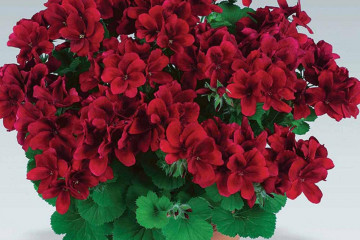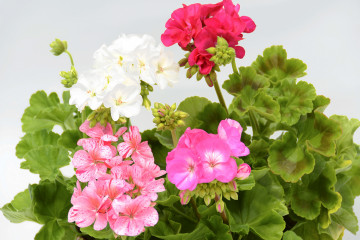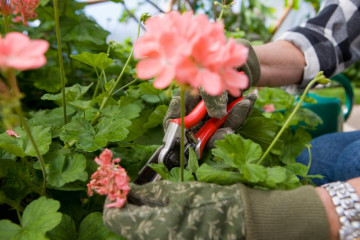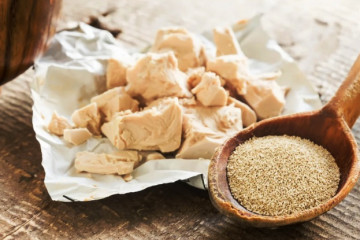How to feed roses for lush bloom
Content:
Luxurious, profusely blooming rose bushes are the dream of any grower. In order for the roses to have a long, lush bloom, you need to know how and when to feed the "queen". It is especially important to comply with the rules of this type of care in the spring and summer.
Top dressing of roses in spring and summer for active growth and lush flowering
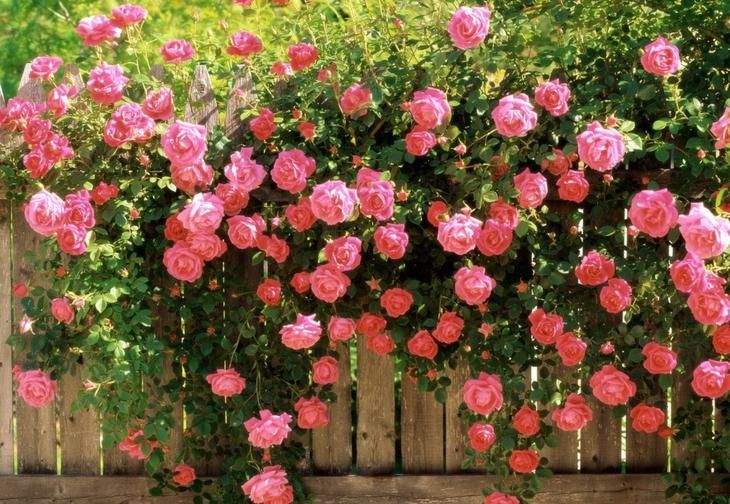
The key to the abundant flowering of climbing roses is correct and regular feeding.
Active growth, budding, the formation of new shoots - all these processes fall within the specified time period. Without additional nutrition, it is impossible to achieve high performance in these aspects.
Why fertilize roses
Every plant needs feeding and garden roses are no exception. Competent and timely fertilization contributes to:
- correct plant formation;
- abundant and long flowering;
- high resistance to disease;
- resistance to adverse weather conditions and freezing;
- trace elements that make up the complex preparations make the color of flowers brighter and more saturated.
How to fertilize roses in spring and summer during budding and flowering
For feeding roses, complex mineral and organic fertilizers, various stimulants of bud formation and other preparations are used. To avoid possible mistakes, you should consider in detail the most important types of dressings and the rules for their use.
Nitrogen fertilizing
The introduction of nitrogen-containing preparations is very important at the beginning of the spring growing season of rose bushes. The substance contributes to:
- intensive growth of green mass;
- the formation and growth of new shoots;
- giving a rich green color and glossy shine to the leaves;
- increase the duration of flowering.
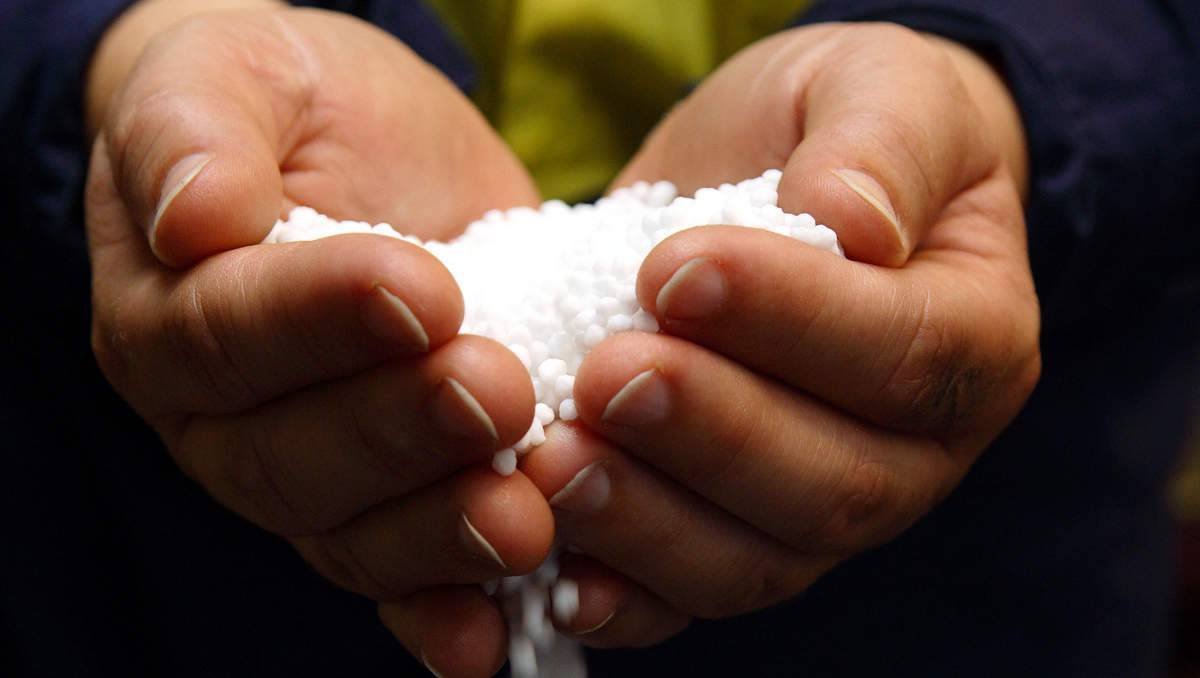
Ammonium nitrate is used as nitrogen fertilizer, contributing to the growth of healthy leaf apparatus and strong shoots
Feeding roses with fertilizers with a high nitrogen content begins after the establishment of warm and dry weather. In smaller doses, the substance is added throughout the summer. Nitrogen fertilizing is very useful for roses after cutting off faded shoots.
Mineral nitrogen-containing preparations for dressing in the spring-summer period:
- Ammonium nitrate. Contains up to 35% nitrogen. The substance is highly soluble, easily absorbed by plants. Fertilizer is highly effective on poorly heated soils in early spring. It is not recommended for foliar dressing of roses, you should also be extremely careful in observing the dosage. Even a slight deviation from the norm can cause burns to the root system of rose bushes. Recommended for top dressing throughout the spring and summer period.
- Urea (urea). Up to 46% of the main substance. Refers to a readily soluble and quickly absorbed fertilizer. It can be used dry when feeding in early spring, from April to September it is used in the form of an aqueous solution. It is used for foliar dressing throughout the growing season. The action of urea is much milder than nitrate.Excessive dosage of carbamide will not cause significant harm to roses, the substance does not leave burns.
- Sodium nitrate. The nitrogen content does not exceed 16%. The drug dissolves easily in water. It is used exclusively for root dressing.
Ammonium and sodium nitrate are most often used dry. To fertilize roses in spring, the substance is scattered around the bushes in the following dosage:
- for small roses, a handful is enough;
- for large plants, you will need about half a glass of granules.
Urea is used in the form of an aqueous solution. For 10 liters of water take 1 tbsp. l. dry matter. They begin to feed the roses as soon as they grow.
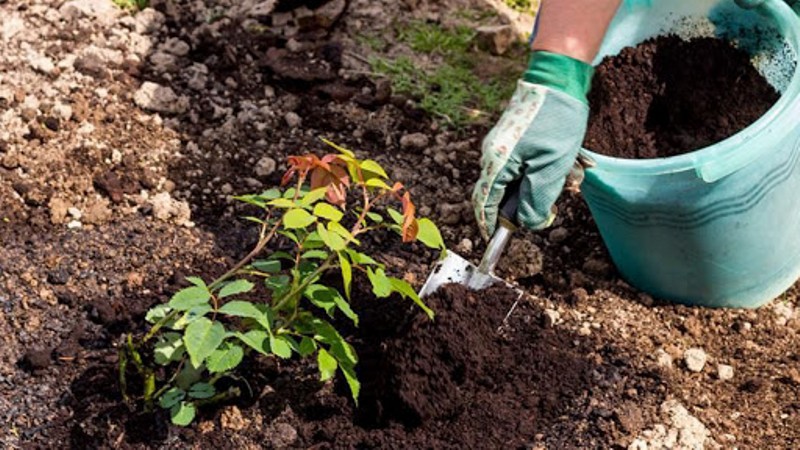
Over-matured manure or humus is introduced into furrows located at least 25 cm from the base of the plant
Organic nitrogen-containing fertilizers include:
- Chicken droppings. Contains only up to 2.5% of the substance. A properly prepared hood for feeding roses, in addition to nitrogen, will also be rich in phosphorus and potassium. Fertilizer will not only help to build up a dense green mass, but also improve the structure of the soil, stimulating the development of a powerful root system of the bush.
- Manure. Applied both rotted and fresh. You can prepare an infusion and water the bushes with it. But a more effective way is to lay the fresh substance at a distance of 25-30 cm from the base of the bush. If it is spread out in close proximity, it can cause burns to the bark of the stems.
Complex organomineral feeding
This type of fertilizer combines organic and mineral nutrients. It is made on an organic basis:
- low-lying peat;
- manure;
- bird droppings.
After undergoing special processing, the base is enriched with macro- and microelements. Organomineral fertilizers are highly digestible. The percentage of organic matter is up to 40%.
The drugs can be purchased in two forms:
- granules that are scattered around the plants;
- concentrated liquid, which is diluted in water and used for root and foliar dressing.
This type of fertilizer is used to feed roses throughout the growing season, from March to October. Fertilizers are considered effective, having the following effects on rose bushes:
- They stimulate the growth of green mass, increase the flowering period, making it more lush and abundant.
- Promotes the formation of a strong root system, enriching the soil and improving its structure.
- Increase resistance to diseases and resistance to adverse natural factors.
The drugs are used in the spring and summer.
Phosphate-potassium dressing
Phosphorus and potassium are equally important elements in the diet of roses. Fertilizer for roses, containing phosphorus in a large percentage, can be found under the following names:
- simple superphosphate;
- precipitate;
- double superphosphate.
The drugs are produced in the form of granules. Phosphorus affects the timely ripening of the shoots of the current year, and also contributes to a longer and more abundant flowering. Top dressing is carried out throughout the summer period, the first application can be started already at the end of May.
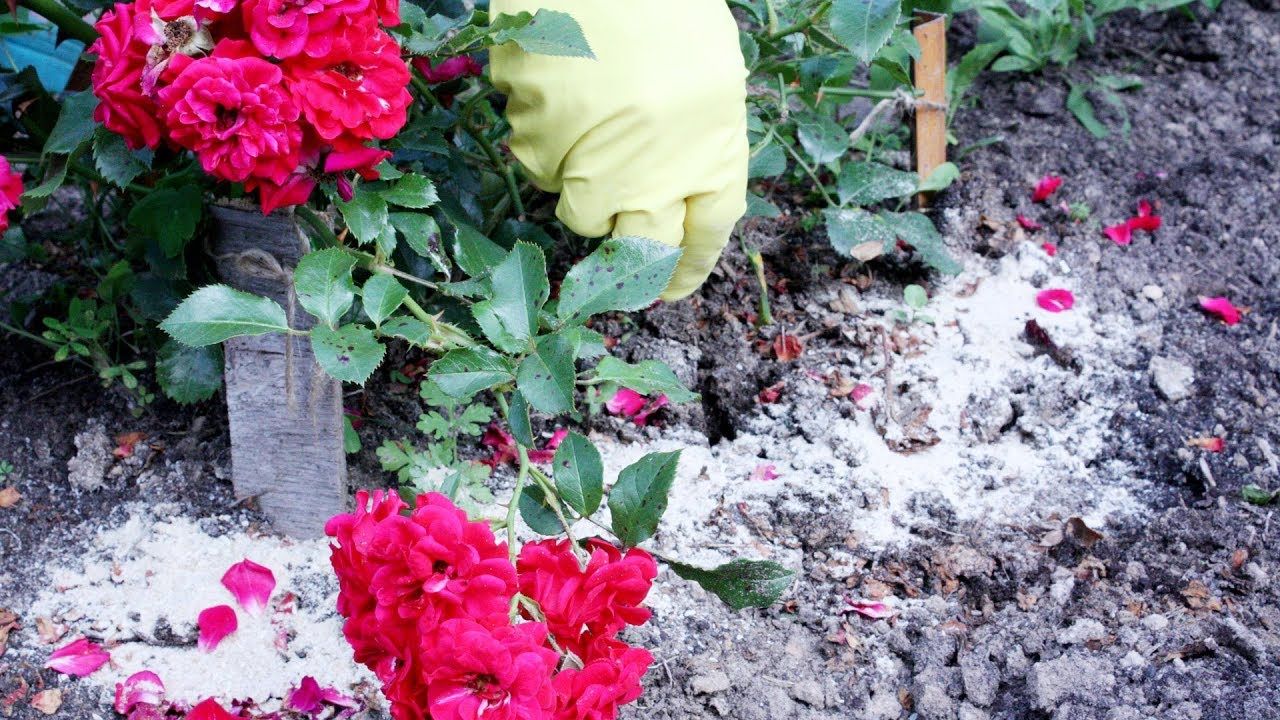
Phosphorus-potassium preparations are applied in the second half of summer
The introduction of phosphorus is carried out in combination with potassium. Roses experience a special need for potassium during the period of budding and intense flowering. Phosphorus-potassium fertilizing is also important for the successful wintering of the plant.
On sale you can find potassium salts with 30 or 40% content of the basic substance. Horse manure is rich in potassium from organic fertilizers, from which highly concentrated extracts are made.
Fertilizers for roses
Commercial off-the-shelf products are easy to use and safer to use. Observing the dosage and method of application indicated in the description, you can avoid many mistakes that beginner growers make when composing mixtures and emulsions on their own.
The most popular and effective are:
- "Fertile Watering Can". Refers to liquid complex organomineral fertilizers for roses. It contains nitrogen (1.5%), phosphorus (1.8%), potassium (2.3%), humate (0.15%). In addition, the drug is rich in magnesium, copper, sulfur, boron, manganese, molybdenum and other trace elements. Application of the drug in the spring-summer period promotes the correct development of the bush, lush and long flowering.
- Agricola. Highly concentrated fertilizer for roses. Contains essential mineral and organic substances. Nitrogen (4%), phosphorus (5%) and potassium (6%) are the main elements. Besides them, the preparation is enriched with micro- and macroelements, humic acids. Top dressing promotes active growth, long flowering, the drug improves the color characteristics of flowers.
- "Pokon". Complex mineral fertilizer for all types of roses, including indoor varieties. Differs in duration of action. Nitrogen, phosphorus and potassium are included in the composition in a ratio of 6: 5: 5, in addition to these elements, the preparation includes all important trace elements in an easily soluble form.
- "Gumisol-N". Organic product based on vermicompost. Promotes root formation, the growth of vegetative mass, the development of immunity to diseases and adverse weather conditions.
- "Bud". Stimulator of bud formation. The drug is made on the basis of sodium salts, hiberlinic acids, humates and microelements. It is used to accelerate the ejection of buds, increase their number and size. Using it, you can extend the flowering period, increase the plant's immunity. One of the most effective rose fertilizers for abundant flowering.

Fertilizer "Pokon" is effective for feeding all types of garden and indoor roses
Fertilizers with humates and microelements
Preparations that include humic substances are very popular among florists. The raw materials for their production are oxidized brown coal, peat or sapropel. This type of fertilizer is rich in active microorganisms, which not only have a beneficial effect on the quality of the soil, but also contribute to the better absorption of minerals by the plant.
Many experienced flower growers, preparing a composition for feeding roses, first make a solution of the basic mineral substance, which then enriches it with humate.
The presence of trace elements in the composition of the fertilizer depends on:
- the ability of roses to form buds of the correct shape;
- brightness and color saturation of the petals;
- leaf color;
- abundance of flowering.
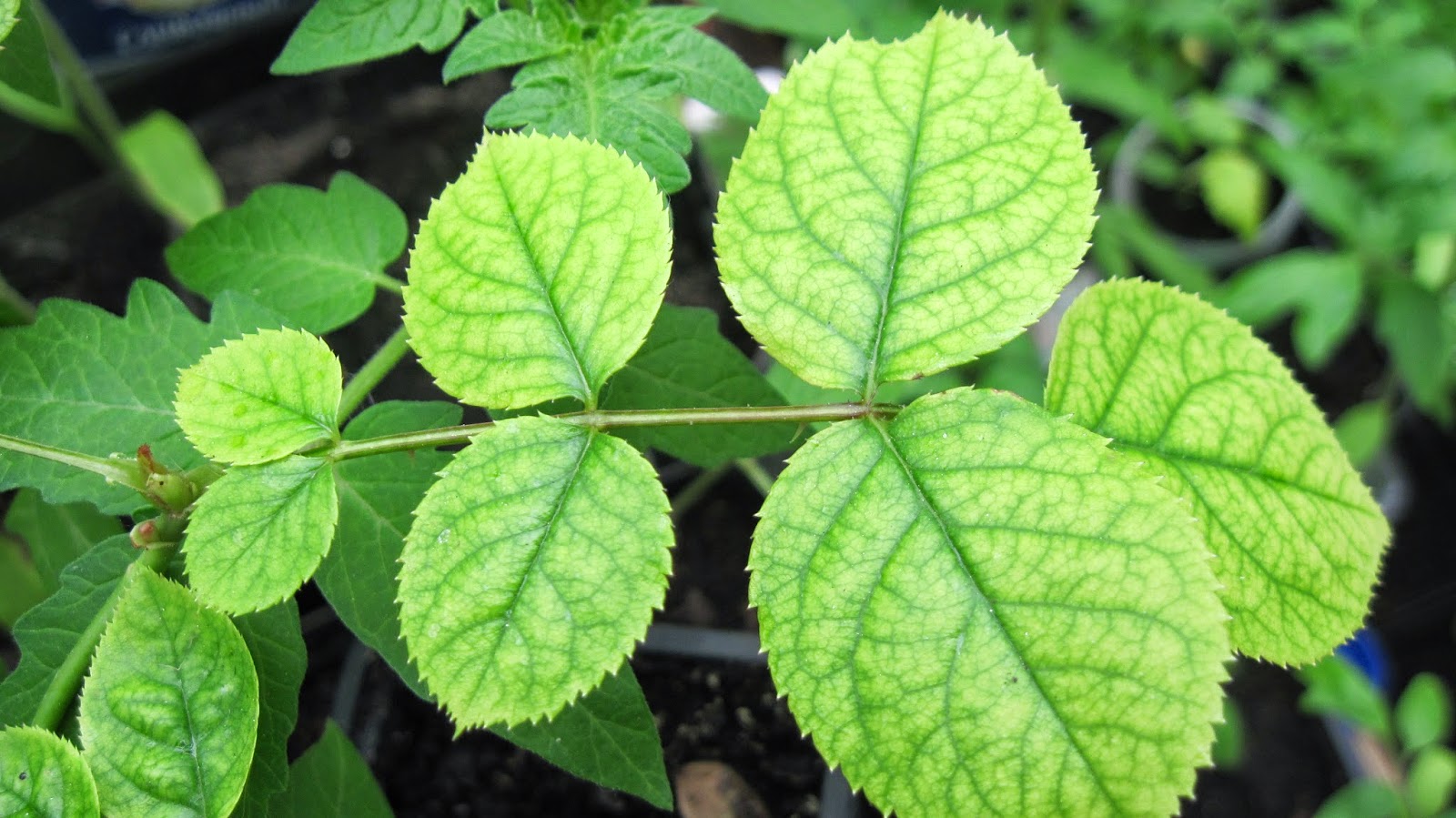
If there is a lack of iron, roses may develop chlorosis.
How to fertilize correctly
There are several basic rules for feeding roses that every florist should know about.
- To apply dry granular fertilizers around the bush at a distance of 15-25 cm from the base, a furrow should be made. The depth of such a hole is at least 10 cm. The composition is poured into the depression, sprinkled with soil and abundantly moistened.
- Leaf dressing is never carried out under the scorching sun. For this, cloudy, windless days are chosen.
- Top dressing with dry formulations is best done in early spring. In the summer season, it will be more effective to water the roses with liquid solutions.
- The calculation of the working fluid must be prepared in accordance with the manufacturer's instructions.
- Sick, weakened and pest-affected plants should not be fed.
- When carrying out foliar feeding, you should avoid getting the solution on the buds and open flowers.
Terms of dressing and application rates in the spring-summer period
Scheduled feeding begins from the second year of growth of the rose bush. In order to understand how to process roses at different stages of growth, which feeding method is better to choose, you should carefully study the fertilization schedule.
March, April. After the snow melts and the shelter is removed from climbing roses, preparations with a high nitrogen content can be applied. Fertilizer is poured into previously prepared furrows around the bush.
May. Period of active vegetative growth and bud setting. They use drugs with a high content of phosphorus and potassium. When cooking on your own for 10 liters of water, you should take:
- 15 g of ammonium nitrate;
- 30 g superphosphate;
- 15 g of potassium salt.
A good foliar top dressing will be an ash solution. 150 g of dry matter is poured into 1 liter of water and infused for 2-3 days. The resulting concentrate is diluted in 10 liters of water.
Picture 7 Onion peel infusion is considered an effective folk remedy for feeding roses.
The infusion of onion peels, prepared according to folk recipes, not only nourishes, but also protects against certain pests and prevents the appearance of mold (blooming) and other diseases.
June. The beginning of flowering of rose bushes. For those who still do not know how to feed roses in June for lush flowering in the garden, a recipe is useful, consisting of:
- 25 g of ammonium nitrate;
- 50 g superphosphate;
- 50 g of potassium salt.
In addition to these components, foliar dressing with the "Bud" preparation will also be useful. A good effect can be achieved by watering with mullein infusion at the rate of 5 liters of solution for each large bush. Many growers this month practice mulching bushes with rotted manure, compost or humus.
July. It is a period of active flowering. Leaf top dressing of roses with a solution of urea at the rate of 30 g per 10 liters of water is very useful. For root nutrition, a composition is prepared from:
- 20 g of ammonium nitrate;
- 40 g superphosphate;
- 60 g of potassium sulfate or potassium nitrate.
A good effect can be achieved by adding 150-200 g of compost under the bush.
August. This month, the application of nitrogen in any amount is stopped. If this is not done, then the young shoots will not have time to get stronger, and will die in the winter cold. The composition for feeding is as follows:
- 40 g of potassium magnesium;
- 50 g superphosphate;
- 15 g of potassium salt.
Before feeding roses, you should carefully study all the rules for making preparations. It is important to observe the dosage, choose the right time and composition of the fertilizer. Despite the whims of a blooming beauty, it is not so difficult to achieve lush flowering, you just need a little patience and knowledge of certain subtleties. And then, blooming roses will become a real decoration of any dacha, country house and even the windowsill of a city apartment.
